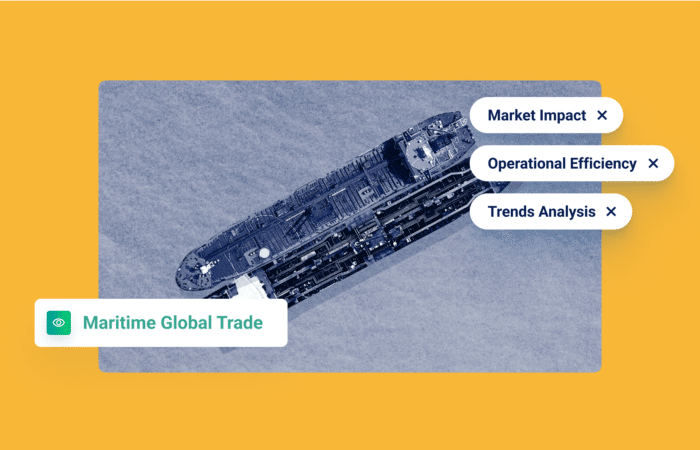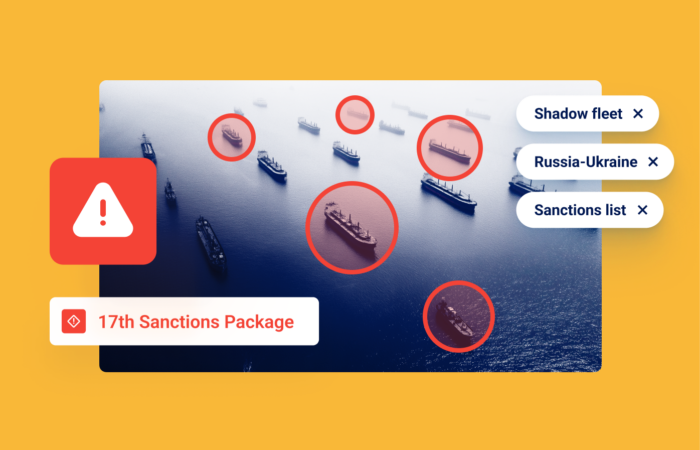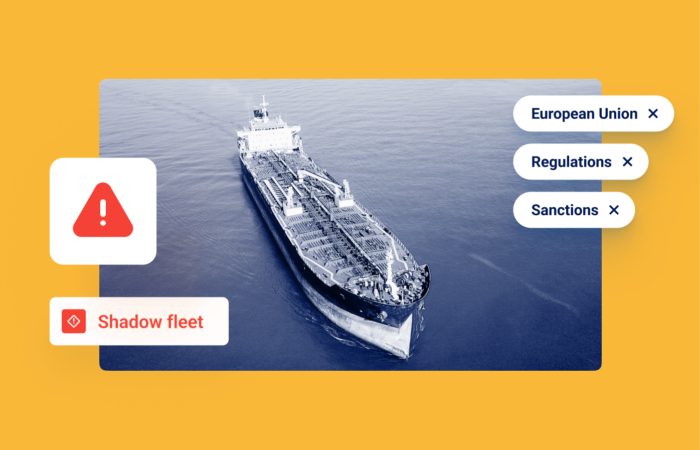3 Factors to Focus on for Better Bunkering Business

What’s inside?
Bunkering companies need as much help as they can to overcome the obstacles they face in a complex industry, challenged by strict regulations that regularly evolve, plus the constant need to generate business and differentiate from competitors.
Bunkering – Not So Simple
Bunkering – helping ships fuel up when they’re out at sea – sounds simple. But various challenges have clouded the waters…
Identifying new business opportunities is difficult, especially considering the significant potential consequences from inadvertently doing business with a sanctioned vessel, and the low level of adoption of effective business intelligence systems.
Bunkering companies are barred from doing business with any organization or vessel that may be sanctioned, and/or engaged in illicit activities.
Deceptive shipping practices (DSPs) have been evolving in response to the recent restrictions related to Russia’s war: European price cap, eleventh sanctions package, American restrictions, etc. So, while oil bunkering operations are ideally quick and simple, the potential pitfalls could lead to massive fines, reputational damage, and even jail time for deliberate violations.
To succeed in today’s complex environment, bunkering companies should pay close attention to the following three areas:

1. Enable business
Bunkering companies operate with small margins. It’s an expensive business, reliant on fuel prices.
Large companies can be majorly impacted by huge fines and settlements…but the blockage of even a single small payment could devastate the cash flow of a lean organization. To remain profitable, bunkering organizations need every bit of business that comes their way.
Despite the chilling sanctions environment, bunkering companies cannot afford to broadly turn away all vessels suspected of being subject to sanctions. For instance, in Q2 of 2023, Windward’s Maritime AI™ platform identified +50,000 STS operations – but only 1.7% were flagged as illicit. There were +880,000 signal losses, but a mere 0.8% were identified as intentional dark activities for sanctions evasion.
They need accurate information that will enable them to do business, and must avoid the false positives that result from making assumptions or not possessing AI-powered technology.
2. Identify deceptive shipping practices quickly
Bunkering deals can be concluded in fifteen minutes, so organizations cannot reasonably stretch the sales process to an hour to conduct due diligence, without risking a lost opportunity.
This makes it tough for bunker trader compliance analysts to screen the vessel and assess the risk to the company. Manual work increases the time pressure. Personnel must complete their due diligence fast and come up with the bottom line risk in real time to know within minutes if refueling a specific ship is a safe bet, or could land them in trouble, without missing opportunities.
First-level list screening is a first step, but it does not enable bunkering organizations to detect the more sophisticated types of DSPs frequently being used.
Things have gotten even murkier since the start of Russia’s war. Gray fleets obscure vessel origins and ownership, or switch flags (flag hopping) to appear non-sanctioned. They’re dubbed “gray” because it is difficult to determine legality and sanctions compliance in many cases.
Gray fleet vessels comprise about 8% of all vessels, with dark fleets, which utilize “dark activities” such as intentionally disabling the automatic identification system, and ID and location tampering to move wet cargo, making up another 10%.
Gray and dark fleets’ hard-to-detect activities related to attempts to smuggle wet cargo from Russia pose a major risk to bunkering shipping. Yet with 82% of vessels cleared, it’s vital for companies to utilize AI-based technology to quickly clear trades and ensure business growth and profitability.
Bunkering companies require Maritime AI™ technology that accurately flags all relevant risky behaviors, without false positives or false negatives, and risk evaluation enhanced by AI.
3. Employ business intelligence
Beyond sanctions risk and clearing vessels, gaining insights into the competitive landscape is a vital part of driving business growth. Examples include:
- Tracking where potential customers are headed, so as to proactively offer them the services they need in advance
- Define customized queries and automated alerts for new business opportunities before they approach your ports and areas of interest
- Knowing which locations bunkering companies’ competitors are strong in
An effective business intelligence solution should offer trading patterns monitoring, with quick identification of new bunkering hot spots, as well as strategic decision optimization. This is achieved by analyzing trends in types of volumes of vessels, and locations to and from ports of interest.
The Bunkering Sweet Spot
Bunkering companies are expected to quickly identify dark activities, STS meetings, and location (GNSS) manipulation, while trying to remain profitable. This requires them to proactively screen the operations of every vessel they do business with and analyze millions of pieces of data every day. Using Maritime AI™ to analyze vessels and behavioral patterns at sea can pare down processes that are lengthy when manual, to mere minutes.
With the right technology, bunkering companies can find the balance between protecting themselves from risks, while quickly making deals and growing their businesses.












